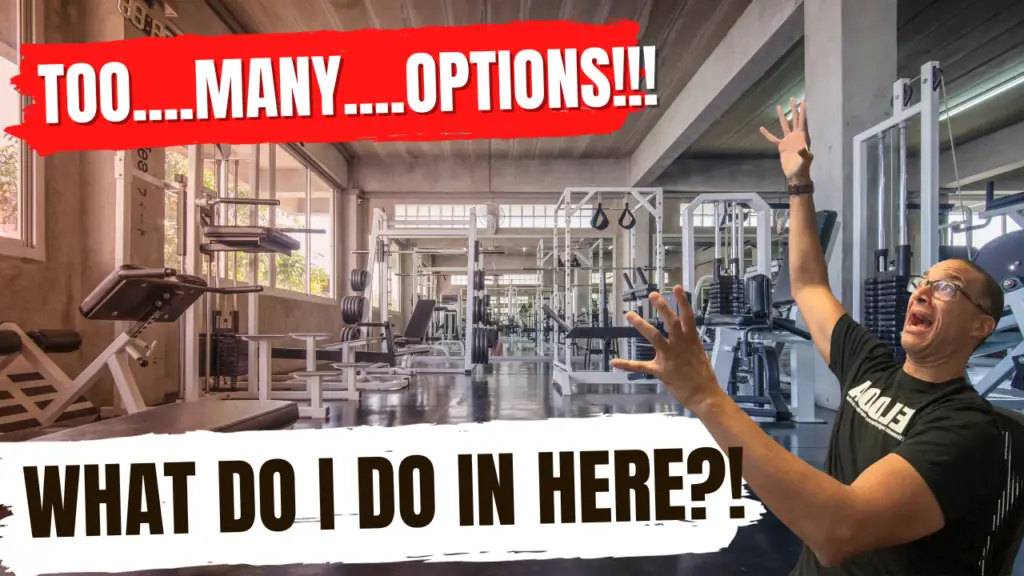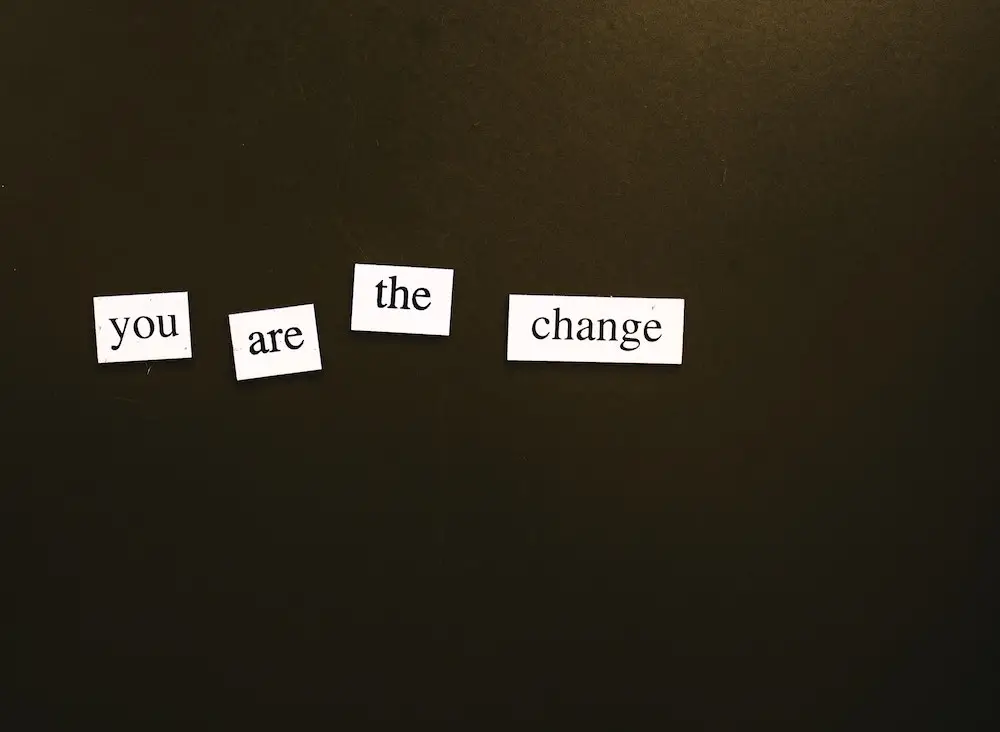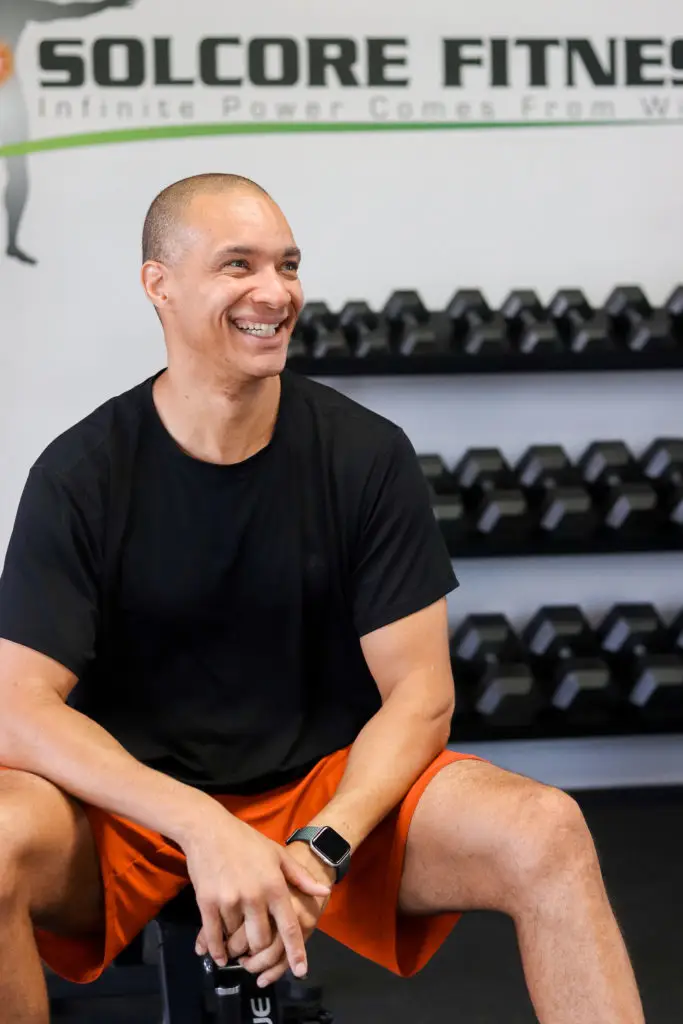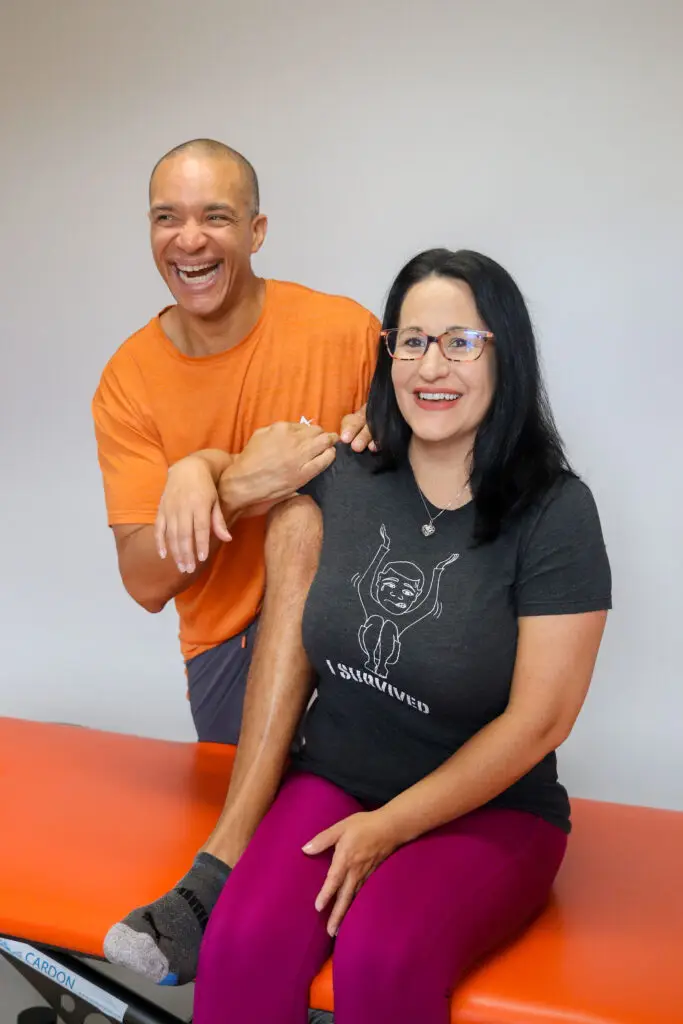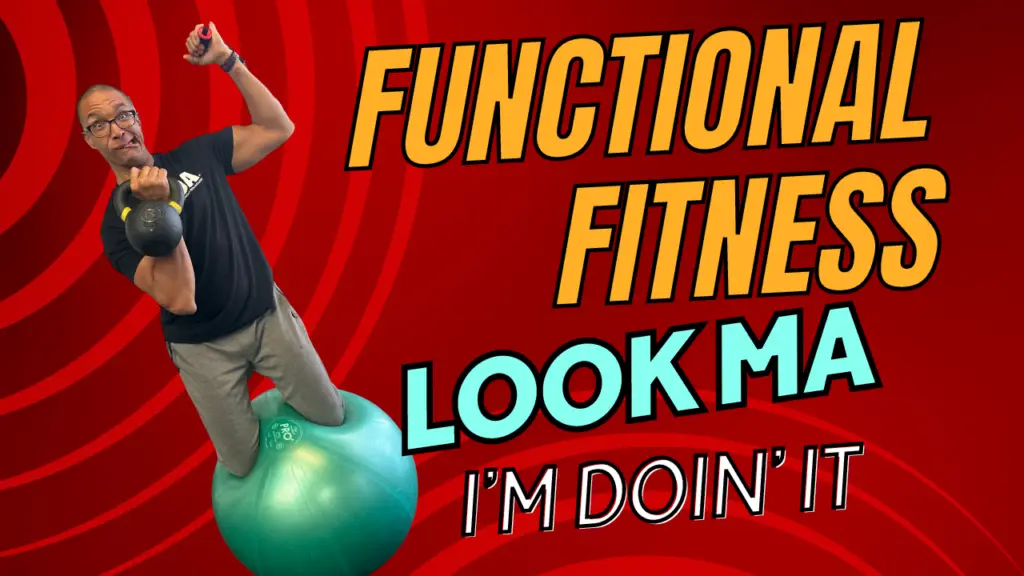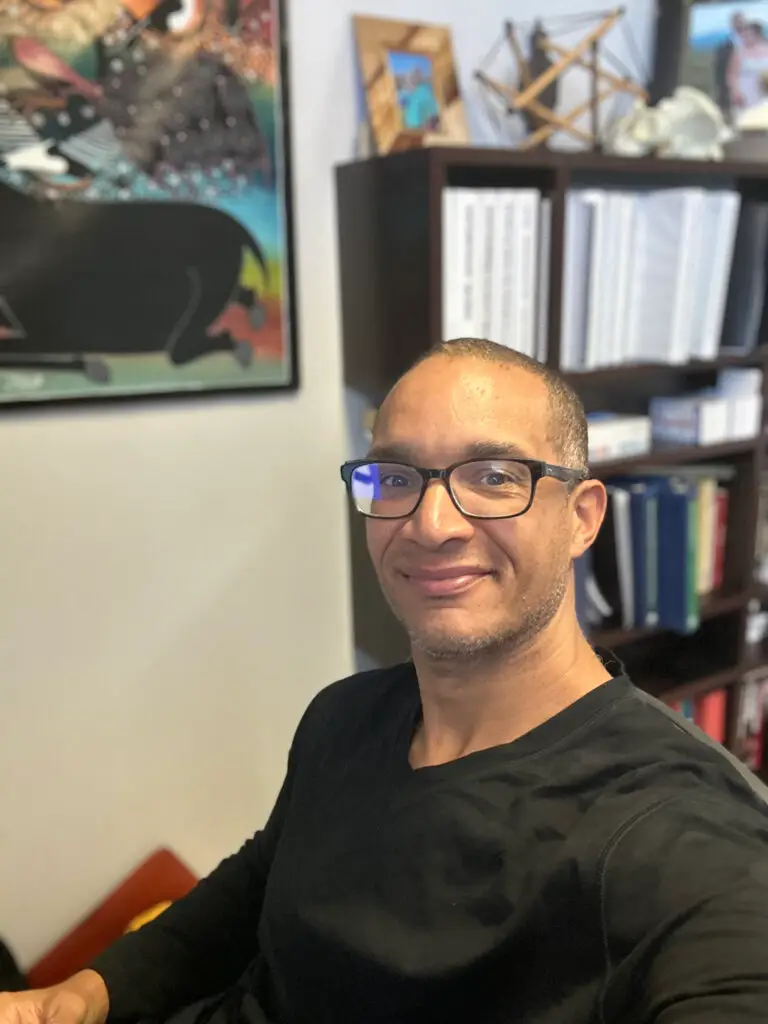
Real Progress from Real Commitment: Michele Byrne’s SolCore Story
When Michele Byrne first came to SolCore Fitness & Therapy, she wasn’t sure what to expect. Like many people, she was used to exercising at home — yoga classes on YouTube, quick stretches, and the occasional bike ride. But after her doctor recommended something more targeted to help with her hip tightness and posture challenges, she gave SolCore a try.
And it stuck.
“I just knew right away this would be good for me,” Michele shared.
“It’s not far from my house, and I had no excuse not to come!”
Michele is an artist who’s spent over 30 years working solo. Just getting out of the house and into a structured environment was a shift — but the results spoke for themselves. She noticed the difference not just during classes, but in the way she moved throughout her day.
From struggling to sit upright with her legs outstretched, to now practicing the 90/90 and figure-four stretches every morning, Michele’s transformation came from consistency, awareness, and dedication.
“Some of the stretches are really difficult,” she said.
“But I feel so much better after class. I’m more aware of my posture all day — and I can tell I’m getting better.”
She had tried physical therapy before, but it wasn’t until she combined specific fascia-based training with a supportive class environment that things really started to click.
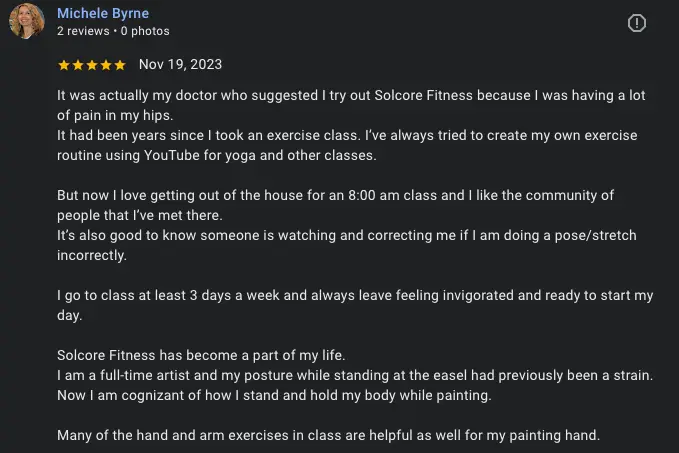
Now, she comes to class regularly — Monday, Wednesday, Friday, and sometimes Saturday — and even finds herself practicing at home.
That’s a big deal.
Michele’s story is about more than flexibility. It’s about reconnecting with your body and giving it what it needs to function better — through smart training, community, and expert guidance.
📍Ready to Hear More?
If Michele’s experience resonates with you and you’re curious about what this kind of training could do for you, check out her full case study:
👉🏽 Watch Michele’s full story here
✅ Then download her case study here.
Building a foundation for a better life.
Find out more @



